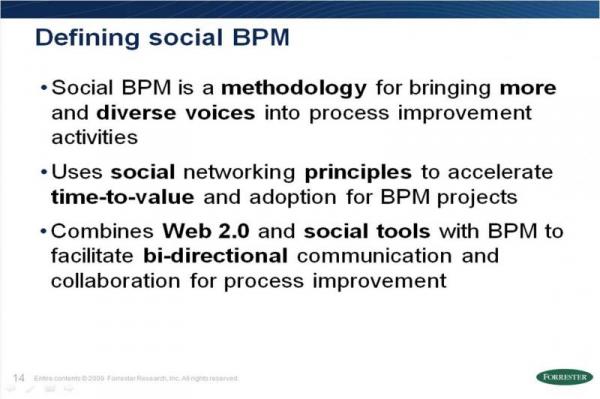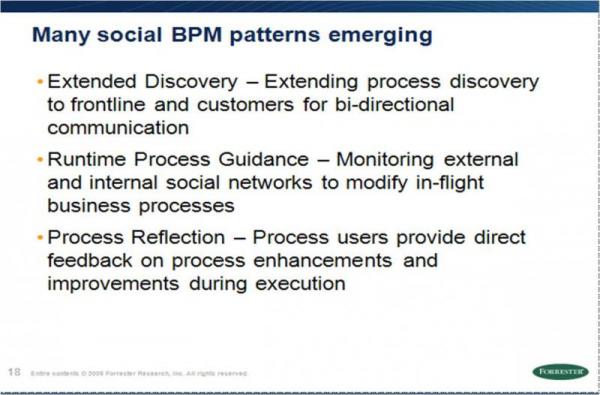Is Social BPM A Methodology, A Technology, Or Just A Lot Of Hype?
Over the past three months, I've been heads down working on our upcoming "Forrester Wave™ For Human-Centric BPM Suites, Q3 2010" report. I've also been on the road over the past five weeks attending and presenting at different BPM vendor conferences – gotta love Vegas! I must admit I have barely had time to keep tabs on my different BPM tribes – blog sites, Twitter conversations, and LinkedIn discussions. I've been checking in here and there around different camp fires and adding a little spark occasionally when something interesting caught my eye.
But today, I ran across a simmering debate around social BPM on different blog sites, here and here. Seems like this is fast becoming the hottest topic in BPM. Guess I shouldn't be surprised since I helped drive the conversation around social BPM over the last year. It's very good to see the conversation evolve and also good to see different perspectives on how social can help improve all aspects of BPM initiatives.
Earlier this month I delivered a presentation on social BPM at IBM's Impact 2010 event. This presentation provided the most up to date perspective on how we see customers using and applying social techniques and methodologies to BPM initiatives. During the session, we framed social BPM in the following way:

In the blogosphere there seems to be divergent views on how social BPM should be used within organizations. On the one hand, some feel that social BPM is all about tools and technology (i.e., process wikis, process mashups, etc.). And on the other hand, I see another camp emerging that believes social BPM should focus on transforming the organization and the organization's processes.
I say, they're both right. We see customers adopting social BPM along a continuum. Of the handful of examples of social BPM we have scraped together, we see some simply using technology – such as wikis – to improve communication and extend the process improvement conversation (to frontline workers, customers, and partners) during process discovery and development. While others are looking to do social mining to transform the way their processes engage with customers at runtime. One size doesn't fit all here.
During the IMPACT session, I highlighted different social BPM patterns we see emerging from process improvement initiatives:

Many speculate that social BPM will have the greatest impact at runtime. I refer to this as "runtime process guidance," and we are starting to see really good examples of this emerge for customer service/customer experience processes – where processes use social analysis to determine "the next best action." But it's early days for this aspect of social BPM.
I'm currently wrapping up a research doc on building the business case for social BPM and social BPM best practices. If you're a process pro and your team is starting to dabble with social BPM, please shoot me an e-mail or post a comment to tell me your story. Also, drop me a line if you have adopted a social BPM pattern other than the ones we've seen from customers thus far (described above).